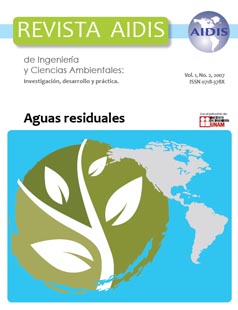Efeitos do recebimento de lodo gerado em estação de tratamento de água para abastecimento em sistemas de tratamento de esgoto por lagoas de estabilização
Main Article Content
Abstract
The disposal of WTP wastes in water bodies may cause several problems to the aquatic environment. Alternatively, these wastes may be disposed in Wastewater Treatment Plants, being hauled by trucks or discharged into collecting networks. This work assesses the impact of the discharge of these wastes in a Wastewater Treatment Plant located in the municipality of São Lourenço da Serra, State of São Paulo. The physicochemical and bacteriological variables of the raw sewage and of the effluent generated by anaerobic and facultative ponds were evaluated before and after the discharge of these wastes. During the two monitoring phases, the analyses of the results showed an excellent performance in the removal of organic matter, with DBO removal efficiencies of 90.5% in the first phase and 88.8% in the second phase. The nutrient removal efficiency (nitrogen and phosphorus) was within the design parameters. Despite the high results of pathogen removal observed during the first and second phases, the final effluent failed to comply with the values required by Decree 8468/76 and CONAMA Resolution 357/05. According to the experimental results, it was verified that the discharge of the WTP wastes did not change the physicochemical and biological characteristics of the raw sewage, nor interfered with the biological processes existing in this type of treatment, keeping the plant performance within the values estimated in its design. After bathymetric analyses in the anaerobic pond, it was noticed that both, in the first and second phases of the project, the average annual sludge accumulation rate was kept near 10 and 18 cm/year, respectively, values which are very close to those found through the empirical method proposed by Saqqar & Pescod (14.6 cm/year and 16.3 cm/year, respectively)
Article Details
How to Cite
[1]
Alves de Oliveira, A., Aparecida Faustino Pires, M., Passos Piveli, R., Seckler Ferreira Filho, S. and Audrá Cutolo, S. 2009. Efeitos do recebimento de lodo gerado em estação de tratamento de água para abastecimento em sistemas de tratamento de esgoto por lagoas de estabilização. Revista AIDIS de ingeniería y ciencias ambientales: Investigación, desarrollo y práctica. 1, 2 (Nov. 2009).


